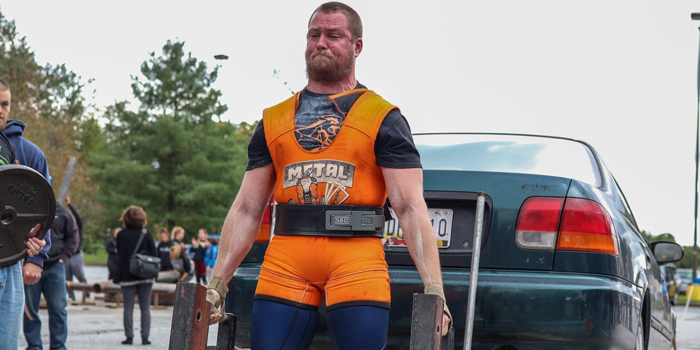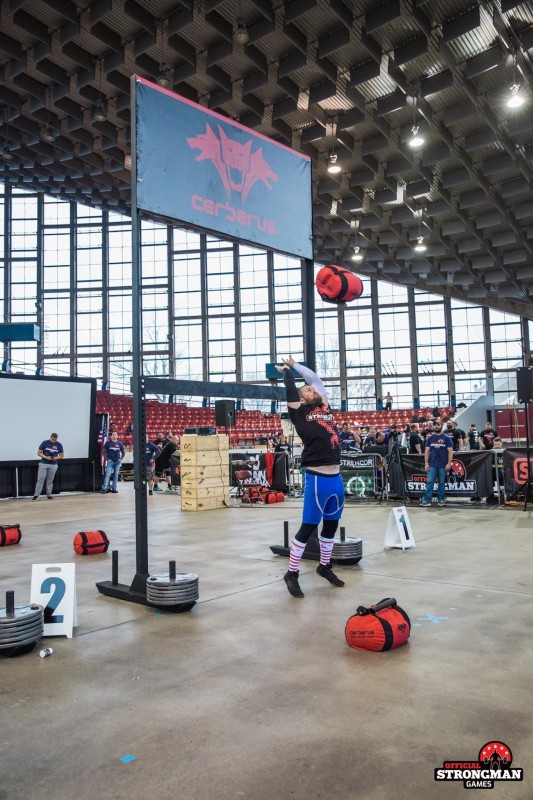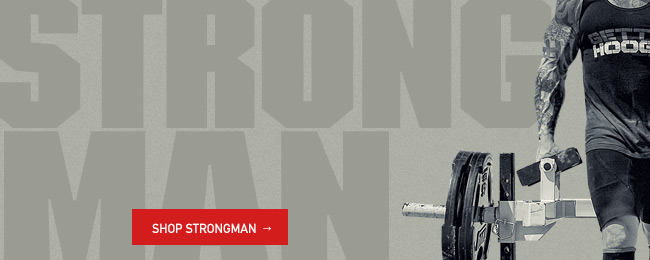
If you’re on this website, you’ve probably tried a ton of different exercise regimens, strength training programs, and muscle magazine suggestions to try and attain whatever goals you’ve created for yourself.
As someone who has lifted for 15 years and competed in strongman for three-and-a-half, I can say I’ve explored many different avenues for one sole purpose: to become a better athlete. It’s the reason I gravitated toward strongman over the other strength sports. I like running (short distances and fast) and being explosive.
LISTEN: Table Talk Podcast #24 with Clint Darden
Looking over various programs and delving into how each one was laid out was a bit intimidating for me at first. In high school, I did what my football coach said. We had a speed and conditioning coach who primarily stayed out of the weight room. Our unit relied on what coaches learned from other coaches and saw at conferences.
Was it right? Sometimes. But any program can work if you simply follow it.
There is also the epidemic known as “bad programming.” It can come in many shapes and sizes, mostly discount codes, for stuff that sounds too good to be true and usually is.
When I got to college, I fell into a true gold mine that ended up being my strength coaches: elitefts pro strongman Andy Deck and IPF gold medalist Mike Hedlesky unscrewed everything I thought I knew about training and implemented concepts that not only got us better, but smarter. They, in turn, connected me with my best friend Gregg Inocencio, who is not only an exceptional strongman competitor but a physical therapist as well. These three guys taught me everything I’ve needed to know about programming.
I joke often with my friends in the strength community that “It’s called strongman, not smartman.” And while this quote is used more regularly than I’d like to admit, strongman, like any strength sport, can be programmed intelligently, allowing an athlete to reach their zenith for that time in their life.
No training style has allowed me to do that quite like the conjugate method.
Utilizing the concepts associated with this method forced me to become a better lifter and smarter with my own programming. Because if you’re dumb with this, you’ll really hate your day job more than you already probably do.
Instead of having a constant backache forcing you to pop pills like NFL players, I have noticed the conjugate method providing me the exact opposite.

So, what are some of the benefits I’ve noticed? I’ll provide examples of how it has helped me in strongman.
1. More explosive with heavier weights
“Speed work” is a very loosely used term. No, you don’t have to have bands or chains on your respective implement to be doing it. But you damn sure better be moving fast. Regarding strongman, utilizing speed work has allowed me to not only learn how to properly execute a movement through accommodating resistance but taught me how to accelerate when sticking points come to light.
2. Your lungs won’t hate you as much
In strongman, there are a lot of events in contests that call for 60 to 90 seconds for a time limit. Usually, they will be AMRAP or timed events where you have no other choice but to haul ass. Incorporating dynamic work into my programming has allowed me to adapt to the increased pressure to perform when I’m tired. Imagine hearing your judge say, “30 seconds,” but you’re not as gassed as your opponents because while they’re huffing and puffing, so you have five to ten more reps. That could be the difference between the podium and not placing.
3. Max effort work works
Each strongman contest you enter is different, but there’s almost always an event where you submit every bit of energy you have into one to three attempts. This is where max effort days and event days come into play. I’ll provide a quick example of how I programmed myself to prepare for a max axle continental clean and press where I set a state record in contest.
RELATED: Training for Strongman in a Commercial Gym
I focused on driving up my front squat to grow a more stable rack position so that when I dipped down for my leg drive, my upper back didn’t fall forward as much, further increasing the range of motion for the press. I also utilized the axle strict press out of a rack and incline bench press while utilizing an elitefts Shoulder Saver Pad. This was to further improve my lockout ability with my triceps while also building my upper chest to accommodate the thicker axle bar.
I also worked with more 3RMs than 1RMs on my axle clean and presses. But I cleaned each one to increase my work capacity for the lift, further nailing down the technique while experiencing fatigue, and this allowed me to gauge an opening, second, and third (and even fourth for a national record that I blew horse manure on) attempt better.
Whether it’s a max stone, deadlift, etc., you can find a plethora of different ways to drive up any and all events, which brings me to my next point…
4. Variety is the spice of life
Strongman is filled with endless amounts of variations for different events. You’ll almost always have an overhead press, deadlift, loading event, moving event, and then a wildcard.
With the conjugate method, you can not only wave the different bars and implements but also tailor them differently in your programming for each contest.
If you have sandbag carries in your contest, you’re not always married to just using that implement. Maybe you suck at the pick, the lap position, or running with it.
Find the implement, bar, or exercises tailored mostly to your weaknesses in each event, and you don’t have to beat the events to a pulp — because if you do, you’ll never recover properly. By the time contest day comes around, you’ll be a fish out of water wondering why you dropped a weight you were crushing in training.
5. Learning when to bring it versus when the contest is more important
Max effort work does not mean you’re going for 1RMs every time that it is on the program. Good luck lasting in strongman if that’s your game plan.
Timing is everything, but if you must hit contest weight that is near or above your training threshold for that day or program, you need to do two things: get stronger and trust yourself.
6. Event days are still possible, but not everyone needs them
Both utilizing an event-centric day or spreading them throughout the week have both worked for me. My most substantial progress happened during a six-month “off-season” (I hate that term since this is merely a hobby for me). I utilized an event day as a max effort day while waving my dynamic days and other max effort days. I’ve even utilized the conjugate method on a three-day split and with an event day.
READ MORE: Don't Peak Too Soon: Strongman Training 2 Weeks Out
The biggest piece of advice I can give is don’t space your lower and upper days too close together, especially when your focus is on your events. Waving your training days is just as important as waving your exercises and implements used.
7. Accessory work options are endless but necessary
This is the most crucial part of my programming that I can’t enforce enough. I am by no means an expert or even an intermediate lifter, but whenever I’ve encountered them in strength sports, they’ve hit me with some cold hard truths about my weaknesses. And it’s what has made me better. This isn’t meant to be half-assed or breezed through just because you loaded up the Spider Bar to a high box with chains and you were wearing a suit and wraps that day.
This method, if utilized properly, will make you smarter about building each intricacy the events provide you. Suck at overhead stability with a log? Set up a trap bar and do strict presses with it off boxes or in a rack. Then, put a yoke over your head and walk with it. Finally, finish with some single arm work so your presses aren’t crooked, and you won’t be waving like the inflatable dude at car dealerships.
Seven is my favorite number, so I’ll stop there.
There are plenty of resources on this website that delve into the actual programming better than I can. I have utilized concepts from Andy Deck, Zach Gallmann, and Clint Darden. All three are experienced characters and exceptional gents as well.
Do yourself a favor: get strong and hurt feelings.
Header image courtesy of Omar B Rimant
Jeff Kryglik is a strongman competitor from Perry Hall, Maryland. He competes in the 90kg weight class. He's been competing in strongman for a little more than three years, lifting for 15 years — mostly to try and improve his abilities as a football player. Jeff played college football at Salisbury University. During the day, Jeff coaches athletes looking for help in strength sports, and at night, he works as an overnight television producer for WMAR-2 News' Good Morning Maryland in Baltimore.











2 Comments